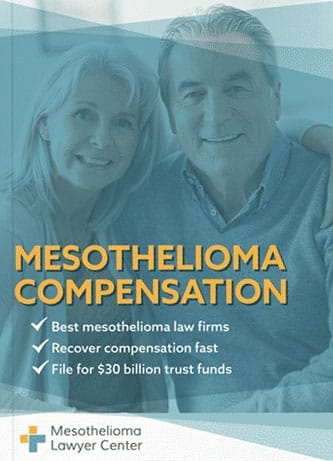The Celotex Corporation used asbestos to make insulation for decades and also operated an asbestos mine. Celotex put many workers and consumers at risk of asbestos exposure and related illnesses. As a result, it faced numerous lawsuits and filed for bankruptcy.
If you or a loved one have been diagnosed with mesothelioma, asbestos-related lung cancer, or asbestosis, you may be eligible for substantial compensation. Fill out our form to receive our free Financial Compensation Packet. Our packet is loaded with information on experienced mesothelioma attorneys in your area, how to file a claim for asbestos trust funds, how to get paid in 90 days, and more.


FREE Financial Compensation Packet
- Info on law firms that will recover your HIGHEST COMPENSATION
- Learn how to get paid in 90 days
- File for your share of $30 billion in trust funds

Did Celotex Use Asbestos?
Celotex made several construction products with asbestos for many years. Asbestos was once prevalent in construction and especially in insulating products. It is highly effective at resisting heat and fire. Carey, a company Celotex acquired, mined asbestos in Canada until 1986.
Celotex Corporation History
The Celotex Corporation was founded in the 1920s in Chicago as the Celotex Company of America, a subsidiary of Philip Carey Corporation.
- Celotex began by manufacturing insulating fiberboard. In its early years, the company expanded to several states and the UK as a subsidiary called the Celotex Company of Great Britain.
- Philip Carey Corporation spun off its Celotex subsidiary in 1932. Celotex Corporation became an independent company making insulation and other construction products.
- The Jim Walter Corporation acquired Celotex in 1961 and moved its headquarters to Florida.
- Celotex acquired subsidiary Carey Canada Inc., which mined and manufactured asbestos for use in Celotex products.
- Celotex began facing asbestos lawsuits in the 1980s. Some employees of the mine and manufacturing plants, as well as construction workers who handled Celotex insulation, became sick from asbestos exposure.
- Over 300,000 asbestos lawsuits forced Celotex to reorganize under Chapter 11 bankruptcy. The proceedings began in 1990, and the company emerged in 1996.
The only version of Celotex that exists today is a brand name of insulation products owned by Saint-Gobain.
Celotex Products That Contained Asbestos
The construction industry used asbestos in hundreds of products. Celotex began making insulation but eventually expanded its product line. These are some examples of Celotex products made with asbestos:
- Sheathing and baffles
- Thermalit
- Flexboards
- Roofing and siding materials
- Firefoil board and panel materials
- Insulated brick siding
- Carey Cenesto board
- Thermalite
- Marine panel
- Asbestos sheets
- Celobric textured buff blend
- Acoustical ceiling tiles and panels
Who Was at Risk of Asbestos Exposure From Celotex Products?
Employees of Carey and Celotex risked asbestos exposure. Miners and other workers for Carey dealt directly with raw asbestos. Celotex factory workers handled asbestos when making construction products like insulation.
Although these workers had high risks of exposure, the distribution of Celotex products put many more workers in other companies at risk, too. Workers in the construction industry had to install, remove, and repair asbestos Celotex products, risking exposure:
- Carpenters
- Drywallers
- Insulators
- Plumbers
- Electricians
- Contractors
- Roofers
- Painters
- Renovation and repair workers
- Demolition workers
Celotex products also went into some industrial sites, including shipyards. Workers like shipbuilders, pipefitters, and boiler workers risked exposure in industrial settings.
Celotex Corporation Asbestos Lawsuits
Celotex and its subsidiary Carey Canada Inc. faced 380,000 asbestos-related claims equaling over $200 billion by 1998, even though they tried to deny responsibility.
The following cases are among a few of the many asbestos claims against the company:
Haskel and Mattie McNair
Haskel Shelton McNair and Mattie Erlene McNair filed a lawsuit against Celotex and 12 other companies after Haskel developed asbestos-related lung cancer from working with and around asbestos products.
According to court documents, the lawsuit went to trial, with the jury returning a verdict in favor of the McNair family.
Celotex was required to pay 30% of a total of $125,000, while another liable company, Raymark, was responsible for 10%.
The other companies settled with the plaintiffs and were responsible for the remainder of the compensation.
In addition, the McNair family won an additional cash settlement of $53,800 against the companies that agreed to settle the case.
Marion George
In 1989, plaintiff Marion George won $588,000 for her late husband, Stuart George, who worked around Celotex products containing asbestos for many years.
Per court documents, Stuart George worked for 58 years as a purchasing agent for Keasbey, an insulation distributing and contracting company.
From 1931 until 1975, Stuart George frequently visited warehouses where asbestos was unpacked and stored. The Celotex subsidiary, Carey Canada Inc., distributed most of the asbestos products used in the warehouse.
In 1976, George died from malignant mesothelioma caused by asbestos exposure.
Out of the 16 defendants that Marion George filed her lawsuit against, Celotex was the only company that refused to settle. Consequently, the case went to trial. Celotex was found liable for damages.
The plaintiff won $700,000, of which Celotex was responsible for 90%. In 1989, after a reduction to factor in the settlement amount from the other defendants, the compensation was reduced to $588,000.
Celotex Files for Bankruptcy
In 1990, Celotex filed for Chapter 11 bankruptcy, which included a reorganization plan. In 1996, the reorganization plan was approved, and in turn, the Celotex Asbestos Settlement Trust was created, which handled all pending and future asbestos-related claims.
The claims covered include both Celotex and its subsidiary company, Carey Canada Inc. The trust fund officially opened in 1998, with around $1.246 million included for claims.
In 2003, the Celotex Asbestos Settlement Trust settled over 400 claims with New York City. The company paid the city over $40 million in property damage to schools and buildings.
Celotex Today
The Celotex brand of Saint-Gobain insulation operates in the United Kingdom. Saint Gobain sells and manufactures thermal PIR (polyisocyanurate) insulation boards as Celotex products.
How to Seek Compensation if You Were Exposed to Celotex Products
If you worked for Celotex or used their products, consider contacting an asbestos law firm to seek compensation. You could be eligible to make a claim with the Celotex asbestos trust. A mesothelioma lawyer can give you the best chance of a successful claim.
Additional Resources for Asbestos Victims
If you’ve been injured by asbestos, keep in mind that there is a good chance that you’ll qualify for considerable compensation. Remember to fill out our form for your free Financial Compensation Packet, with information on asbestos and mesothelioma lawyers in your area.

Paul Danziger
Reviewer and EditorPaul Danziger grew up in Houston, Texas and earned a law degree from Northwestern University School of Law in Chicago. For over 25 years years he has focused on representing mesothelioma cancer victims and others hurt by asbestos exposure. Paul and his law firm have represented thousands of people diagnosed with mesothelioma, asbestosis, and lung cancer, recovering significant compensation for injured clients. Every client is extremely important to Paul and he will take every call from clients who want to speak with him. Paul and his law firm handle mesothelioma cases throughout the United States.
References
- Saint Gobain. (n.d.). About.
Retrieved from: http://www.celotex.co.uk/about - U.S. Court of Appeals, Second Circuit. (1990, September 13). George v. Celotex Corporation.
Retrieved from: http://openjurist.org/914/f2d/26 - Elder, L. (1998, January 18). With Bankruptcy Hurdle Cleared, Celotex Will Shutter Local Operations. Houston Business Journal.
Retrieved from: http://www.bizjournals.com/houston/stories/1998/01/19/story6.html?page=all
